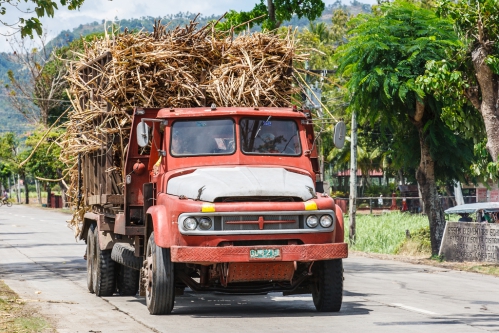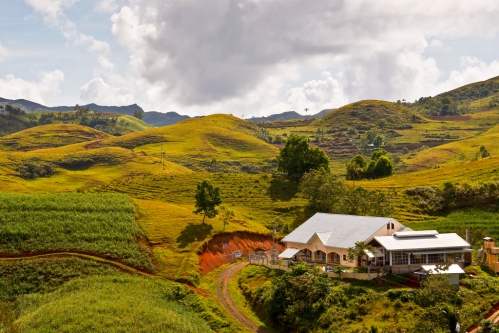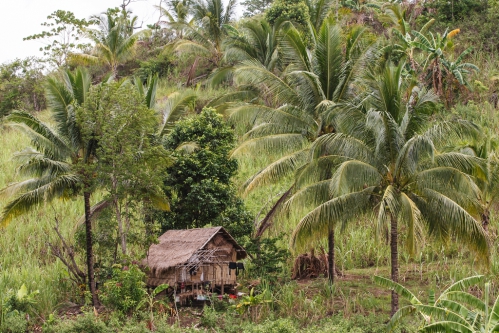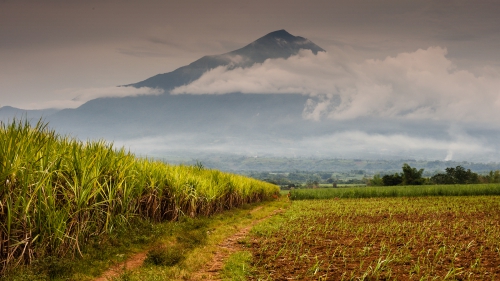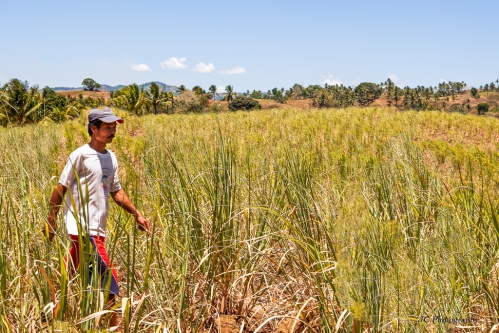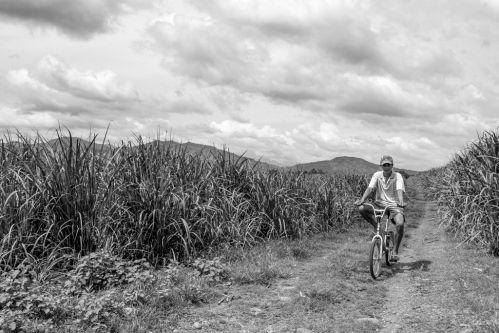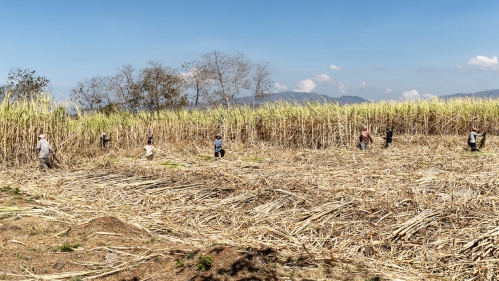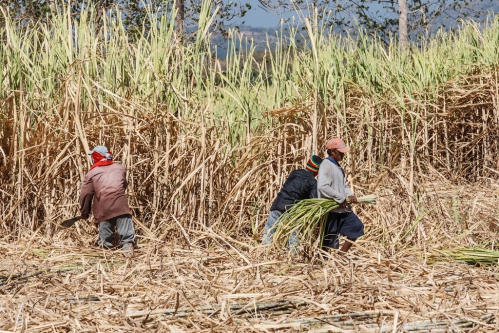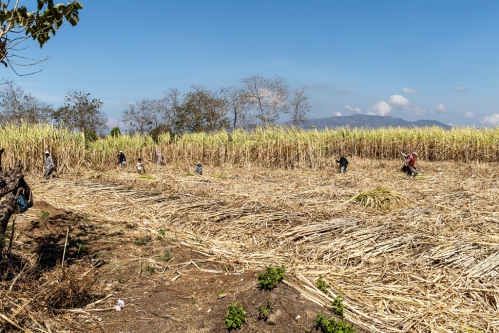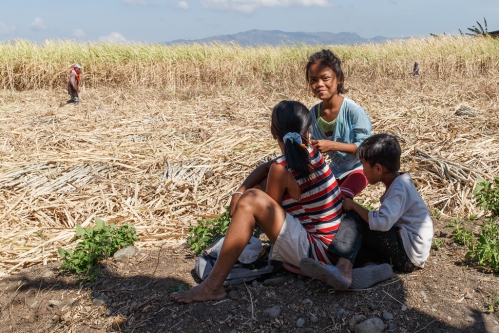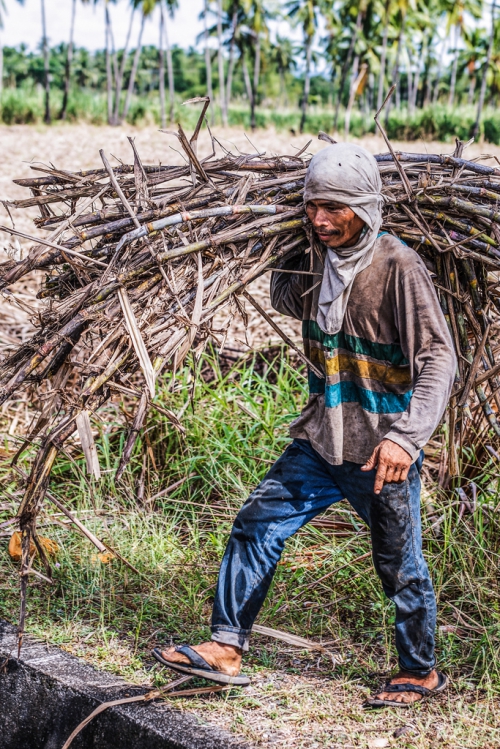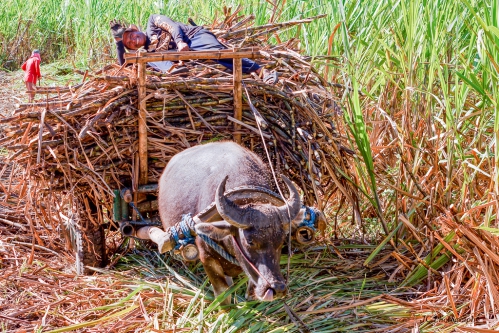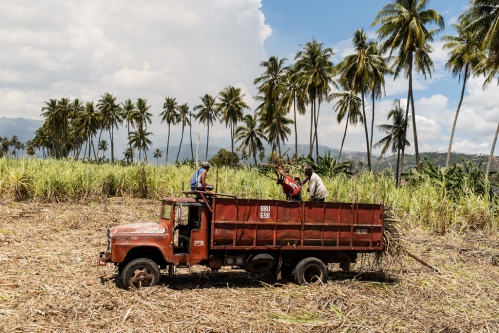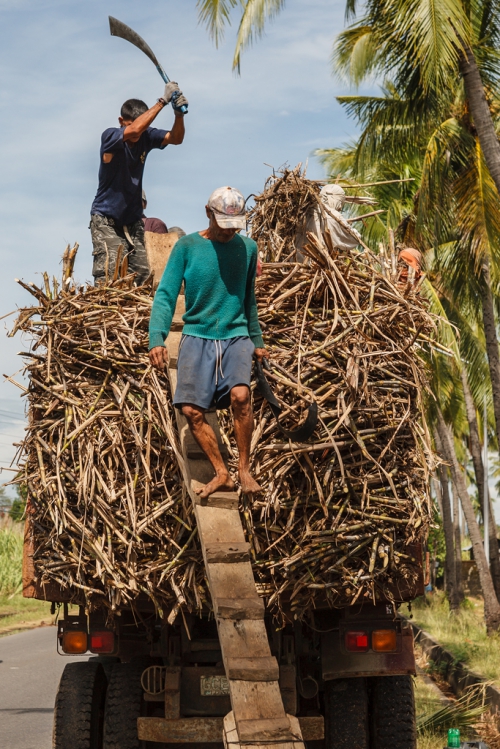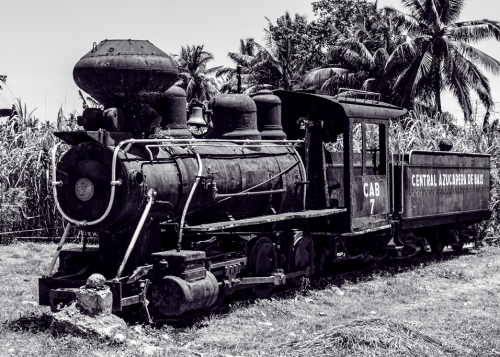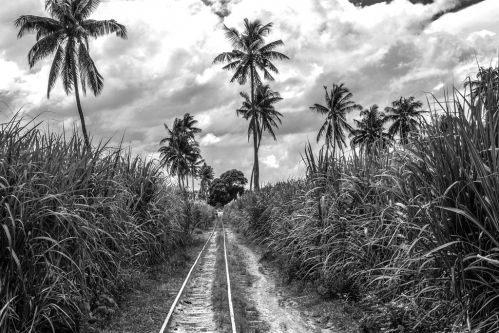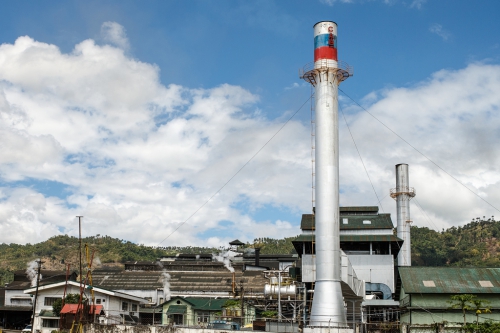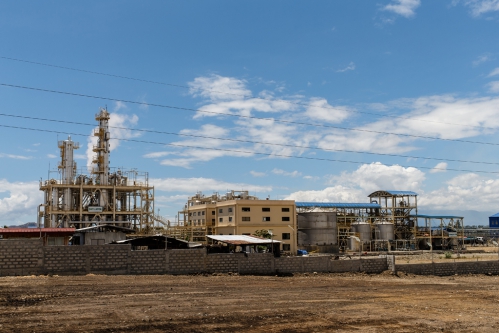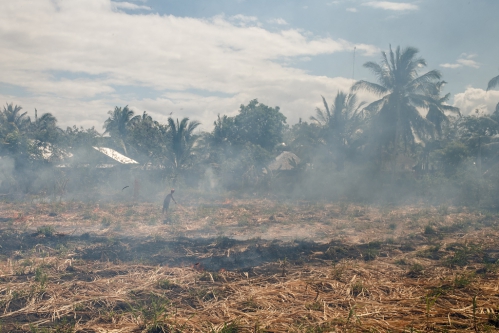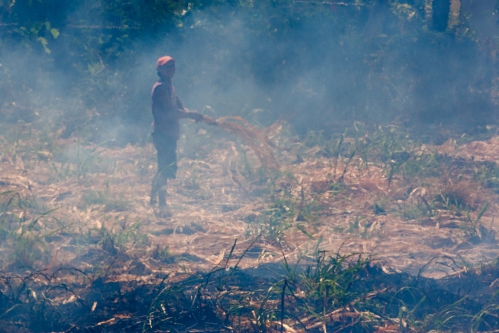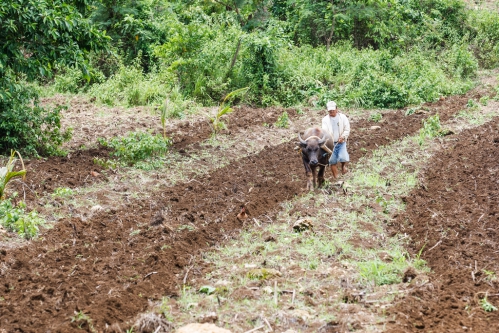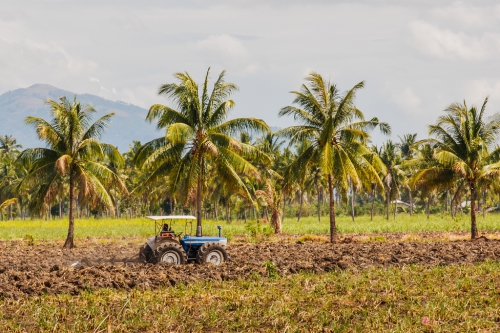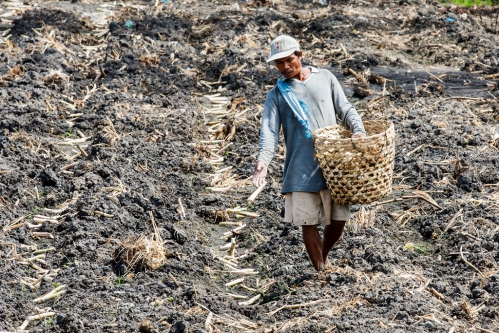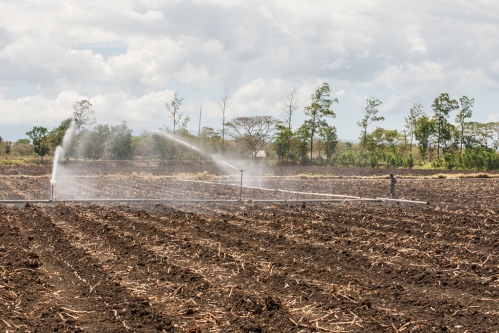Negros Island, the sugar dispenser of the Philippines
It has been almost eight years since I started this blog and if I can still publish new photos, I admit that editorially I have much more difficulty finding new topics after so many years living in the same place and not being redundant so I will try here to write about the richness of Negros, which is the sugar cane.
Wednesday, April 8 at 9:30 pm, I went to bed with a good thriller book when suddenly the power was cut. Nothing unusual here though now it's becoming increasingly rare. I waited an hour to see if the light came back but then I had to reach a decision when deprived of air-conditioned, I began to sweat in my bed. I got up, went out and with my two dogs as an escort to near the entrance gate to start my generator. Then I woke up every hour to see if the power was back but at 6am but there was still nothing. I prepared my breakfast then switched off the generator to cool it.
Upon arrival around 7:30am my gardener explained the origin of the power failure.
The day before a truck carrying sugar cane while in a straight line on the highway, crashed into an electricity pylon and destroyed it thus depriving the surrounding population of energy. This is not surprising when you see the poor condition of these mostly American and Japanese surplus trucks used a few months a year, poorly maintained and often driven by inexperienced drivers even without a license.
It was not until April 9, 2pm that everything finally returned to normal.
I wanted for some time to write something about the sugar cane and the incident prompted me to start a small report illustrated with photos on the subject.
(One of the trucks roaming the Negros roads from November to April)
The Philippines is the world’s ninth largest producer of sugarcane and second in Southeast Asia after Thailand. Negros Island with an area of 12,706 km2 (one and a half Corsica) remains the largest producer in the country with 450,000 hectares planted, more than half of the arable land of the island and employs 300 000 workers.
Sugarcane was already present in the Philippines when the explorer Fernand de Magellan discovered the archipelago in 1521. It was imported from the Celebes by Arab sailors in Mindanao and then to the North in the Visayas.
Yet it was not until about 1850 that the sugar industry took off with an increase in global demand. Soil and topography of the island of Negros are particularly suitable for this crop and most of the arable land is then converted. For over a century, Negros sugar becomes the Philippines sugar bowl, allowing some families to make a fortune, but leaving the majority of people with just the bare minimum to survive.
The relative balance lasted as cane sugar prices remained stable enough on international markets. But in 1985, prices collapsed to the point that harvest the cane was not even worth the trouble. With its monoculture system, Negros found himself cornered. Then followed a period of severe poverty in which many small sugar mills disappeared while nearly a quarter of a million seasonal workers found themselves forced unemployment with no alternative source of livelihood.
Then the land reform of 10 June 1988 redistributed tenants and agricultural laborers lands payable in 15 years and bought from public and private owners of more than 7 hectares. Unfortunately many of these lands were taken over by one means or another to many of the new owners by the formers, the sugar barons reigning from their haciendas on huge properties. These hacienderos of Spanish origin and notwithstanding some interbreeding still feel as pure Castilians and continue to speak Spanish.
In Negros Island, there are small and medium farms but also large ones. 75% of farms are smaller than 5 hectares, 11% from 5 to 10 hectares, 11% from 10 to 50, 2% from 50 to 100 and 1% larger than 100. However, the farms of more than 50 hectares occupy 34% of the arable land.
It is also on Negros that 13 mills out of the 29 of all the Philippines are found.
(A hacienda in Negros Occidental)
(A house 'kubo' of sugar cane workers)
The country wants to be self-sufficient in sugar and does not export not wanting to be dependent on world prices. Instead the surpluses are transformed into bioethanol. Indeed, since the 2006 law on biofuels, the sugar cane industry has found a new lease with the ethanol extract of its molasses and since 2011 all fuel sold in the Philippines must contain at least 10%.
I remember my first road trip around Negros in 2008, during the global rice shortage, rice that is the basic food of Filipinos. I was then surprised to see that many sugar cane fields turned into rice fields. When the soil allows, these two crops require roughly the same amount of water and the permutation is easy.
(Sugar cane field near Kanlaon volcano)
Today sugarcane has taken back its rights and mid-April is the end of the season as it is harvested from November to April. One cane shoot can be harvested up to three times and it takes about ten months to mature.
(The sugar cane is growing)
(From November to April, the harvest with the 'help' of their children)
(The carrying to the trucks)
(All workers wear long sleeves to avoid cuts)
(Some trains are still working for sugar cane transportation to the mill)
(Finally the sugar cane mill of Tanjay)
(The bioethanol refinery of Bais. It was forbidden to take pictures)
After the third harvest, the fields are burned to remove plant waste and other pests.
(The burning of the fields)
Then comes the moment of plowing.
(Plowing with a carabao or a tractor)
The new shoots are planted and buried.
and then generously and regularly watered.
Now we are into the period from April to September here called tiempo muerto or dead season, the time between planting and harvesting when there’s no work in the cane fields. To both dumaan, the resident farm workers and the sacada, the seasonal ones, this means lean times for their families—a situation they have endured for generations. The locals refer to this as tingkiriwi, or pain, and tinggulutom, a time of hunger.
There are around 300,000 sugar workers on the island of Negros, providing for almost two million dependents. On average, a sugarcane worker earns a little over $3 US a day, less than half of the government mandated minimum wage. A seasonal worker earns roughly $2.
During tiempo muerto, when all work stops for four to six months. The resident farmworkers live on cash advances deducted from their salaries when work resumes, but those who are not regularly employed by their hacienderos either make their way to the coast or cities to try and get temporary work to survive.
Spare a thought for them when we taste something sweet or even when refueling our vehicle here in the Philippines. As for me, except the brown sugar in my coffee, I think about them when drinking another distilled extract of the cane, the rum. I recomment the 'Don Papa' brand, expensive but so delicious.
A découvrir aussi
- Letter 6 : English humor and reality!
- Letter 9: Philippines Gems
- October 2009: The Philippines, the end of a nice story?
Inscrivez-vous au blog
Soyez prévenu par email des prochaines mises à jour
Rejoignez les 21 autres membres

